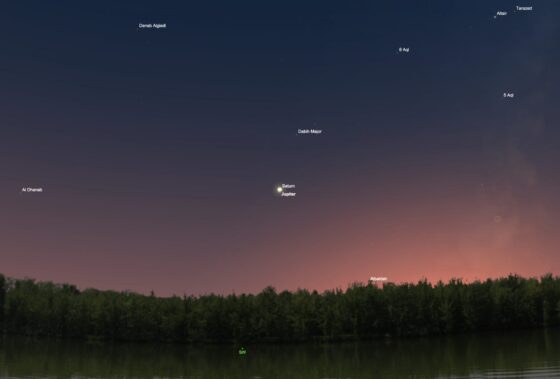
We, in the Northern Hemisphere, may hate that nights leading up to the Winter Solstice Dec. 21, 2020 have gotten longer. But this year the darkness is a bonus.
Because, shortly after the sun sets, Monday, Dec. 21, sky watchers should be able to see two of our planets, Jupiter and Saturn, closer to each other’s orbits then they will be for years.
In addition, staying darker longer also means being able to watch the Ursid Meteor shower which peaks Dec. 21 and what’s left of the Geminids early Monday (or Tuesday) morning.
(BTW, even though the Winter Solstice has the shortest amount of daylight, the earliest sunset already occurred and the latest sunrise is still a few days off. See what your sunrise and set times are.
Prime time to see the two planets at their closest is 4:15 p.m. CST Monday, low in the southwest. But you can see them fairly close to each other through December.
What regular sky watchers know is that the two planets do pass near each other every 20 years as they last did in 2000. The difference this year is that their orbits bring them 10 times closer than in 2000.
Indeed, they will be closer than they have been seen at night than in 800 years and closer during the day in 400 years. Seen together as a “great conjunction,” they may resemble one large or elongated planet or star.
As for the meteors, the Ursids which shoot across the sky seemingly radiating from Ursa Minor about 10 meteors per hour, aren’t as plentiful as the Geminids. However, both can be seen Dec. 20-22. The Ursid comet parent is 8P/Tuttle.
